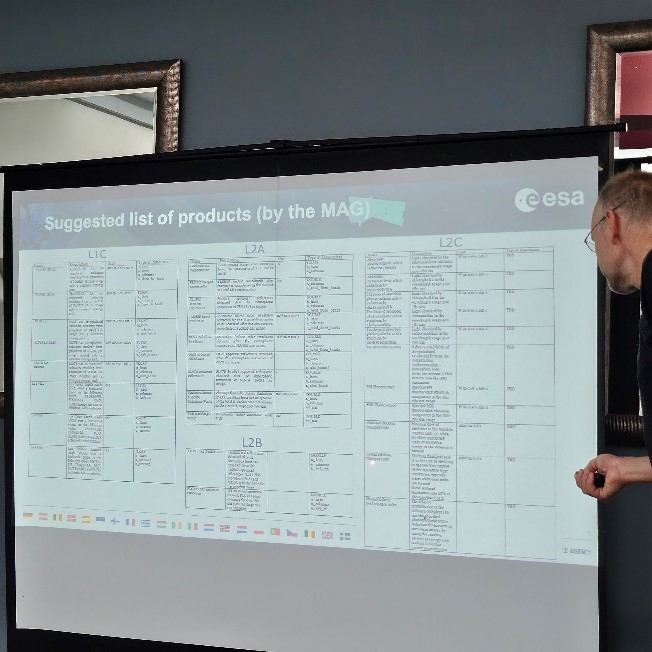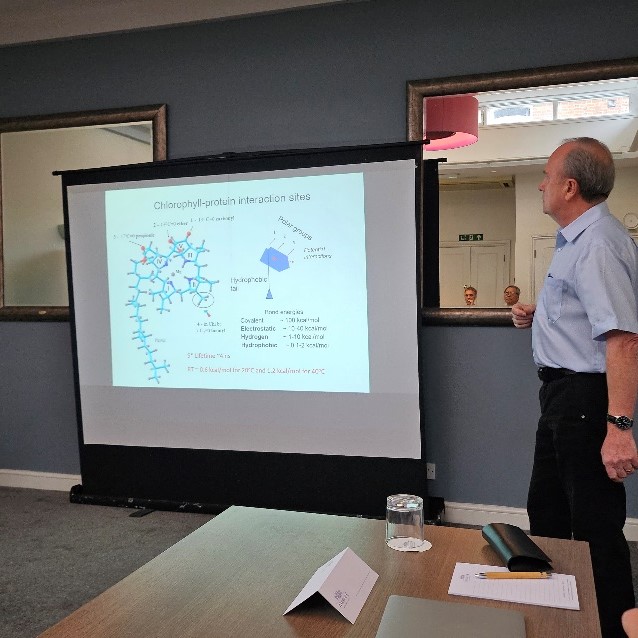
From September 25th to 27th, a new collaborative group of scientists gathered at the scenic Warbrook House Heritage Hotel in Hook, UK, for the LEMONTREE Energy Partitioning Workshop. The goal? To make headway in creating a universal, testable model for understanding the seasonal dynamics of plant pigments and their pivotal role in photosynthesis. The event, organised by Dr Catherine Morfopoulos and Prof Iain Colin Prentice from Imperial College London, brought together experts from top institutions around the world. Their mission was to explore how recent advances in satellite data and models of photosynthesis can be combined to offer better insights into plant growth and climate regulation on a global scale.
Why Plant Pigments Matter
Photosynthesis is the process by which plants capture sunlight and convert it into energy. But there’s more to the story than simply soaking up light. Plants also need to regulate how much sunlight they absorb, especially under conditions of excess light or water stress, which can cause damage to their photosynthetic machinery. To do this, plants rely on a complex system of pigments—including chlorophyll, carotenoids, and xanthophylls—that not only capture light but also protect the plant from stress. These pigments are responsible for the optical signatures that satellites use to monitor vegetation health from space.
The challenge with current vegetation models is that they often simplify or overlook this intricate balance of light capture and energy regulation. Most models describe the light reactions of photosynthesis using empirical functions, like the Farquhar, von Caemmerer, and Berry (FvCB) model. While these models are widely used, they don’t fully account for the role that pigments play in modulating photosynthesis, particularly under changing environmental conditions. This is where the work of the LEMONTREE project aims to make a difference.
Why Earth Observation Data Is Crucial
One of the most exciting aspects of the workshop was the discussion about how Earth Observation (EO) satellites measure the optical signatures of plants. By detecting light absorbed by specific pigments, satellites can infer the health and productivity of vegetation on a large scale. The most commonly used EO products are indices that compare light absorption at pigment-specific wavelengths with a non-active wavelength, usually in the near-infrared range. These indices can provide valuable insights into plant health, but they come with limitations.
For instance, the absorption bands of different pigments often overlap, making it difficult to isolate the contribution of individual pigments. Existing sensors also capture only a limited number of spectral bands, which may not be the most informative for studying photosynthesis. Sun-Induced Fluorescence (SIF) offers a promising alternative, as it directly measures the light emitted by plants during photosynthesis. However, interpreting SIF data is complicated by the fact that much of the emitted light is reabsorbed within the plant canopy, making it hard to estimate the total amount of photosynthetic activity.
Key Workshop Discussions: Bridging the Gaps
During the workshop, participants took on some of the major challenges in using satellite data to better understand global photosynthesis. A significant point of discussion was how to develop models that explicitly consider the role of leaf pigments, their functions in photosynthesis, and their signatures in EO data. By incorporating more detailed knowledge about these pigments into global models, researchers hope to improve estimates of gross primary production (GPP)—the total amount of carbon plants take up from the atmosphere.
The event also highlighted the potential of recent advances in hyperspectral reflectance measurements and SIF data, including the exciting possibilities offered by upcoming satellite missions like FLEX (Fluorescence Explorer). Hyperspectral sensors, which capture a continuous spectrum of light across many narrow bands, have the potential to resolve some of the issues with cross-pigment overlap, enabling more accurate monitoring of plant health and photosynthetic activity.
However, significant challenges remain. For one, there is a lack of data at the meso-scale, the intermediate scale between small laboratory measurements and global satellite observations. There’s also the difficulty of accurately modelling how absorbed light is partitioned within the plant—some of it drives photosynthesis, while other portions are dissipated as heat (a process known as non-photochemical quenching). Improving our understanding of this energy partitioning is crucial for making better use of satellite data to estimate GPP.



Figure 1.Some of our presenters at the workshop: Top left – Alexander Ruban (Queen Mary, University of London), Top right – Matthias Drusch (ESA), Bottom – Zbynek Malenovsky (University of Bonn).
Outputs and Future Directions
By the end of the workshop, there was a palpable sense of excitement about the progress made and the opportunities ahead. Dr Catherine Morfopoulos, one of the workshop’s organizers, summed it up well:
“The workshop covered a wide range of scales of photosynthetic research, from the photosystems to the satellite. I was thrilled to see such a wide range of expertise together, which triggered useful discussions. I hope that this workshop will be the start of productive collaborations, and I am thankful for the enthusiasm and willingness to share their knowledge from all participants.”
Among the key outcomes of the workshop were the steps taken towards developing a universal, testable model of how plant pigments influence photosynthesis. Participants also outlined the additional observations and experiments that will be needed to validate and refine this model. A common theme was the need for better coordination in gathering and sharing data. While there is more in situ data available than previously thought, much of it is scattered across different repositories. The LEMONTREE team discussed the possibility of creating a central data repository to facilitate better access and collaboration.
Spotlight on Fluorescence Research
One of the highlights of the workshop was the work presented by Gabriel Hmimina and Yves Goulas on active and passive fluorescence at the meso-scale. Their research aims to bridge the gap between small-scale laboratory studies of fluorescence and large-scale satellite observations by mimicking laboratory techniques in a forest environment. This innovative approach could offer new ways to monitor photosynthesis in real-time, although more work is needed to validate their findings and scale them up for broader application.
Continued collaboration
The LEMONTREE Energy Partitioning Workshop was not just a one-off event. The participants agreed to continue collaborating, with plans to meet again in person next year to keep the momentum going. One of the next major steps will be the development of a joint paper outlining the current state of knowledge, the available data, and the gaps that need to be filled to maximize the potential of upcoming satellite missions like FLEX.
This work aims to develop better tools for monitoring global photosynthesis, with direct implications for understanding the carbon cycle and predicting how ecosystems will respond to climate change. By bringing together cutting-edge research on plant pigments, photosynthesis, and satellite data, the LEMONTREE project is poised to make significant contributions to the field of Earth system science.
Thank you!
We would like to extend our heartfelt thanks to all the participants for their invaluable contributions to the LEMONTREE Energy Partitioning Workshop. Special thanks to Iain Colin Prentice, Catherine Morfopoulos, Wenjia Cai, David Sandoval, and Joseph Ovwemuvwose from Imperial College London, Sandy Harrison from the University of Reading, Pierre Gentine from Columbia University, Alexander Ruban from Queen Mary University of London, Shari Van Wittenberghe from the University of Valencia, Lianhong Gu from Oak Ridge National Laboratory, Ying Sun from Cornell University, Matthias Drusch from the European Space Agency, Georg Wohlfahrt from the University of Innsbruck, Yves Goulas and Gabriel Hmimina from École Polytechnique, Manuela Balzarolo from the Institute for Climate Resilience, Zbynek Malenovsky from the University of Bonn, Christiaan van der Tol from the University of Twente, and Lina Mercado from the University of Exeter. Your expertise, enthusiasm, and collaborative spirit—whether in person or online—were integral to the workshop’s success. We look forward to continuing our work together in the future.
